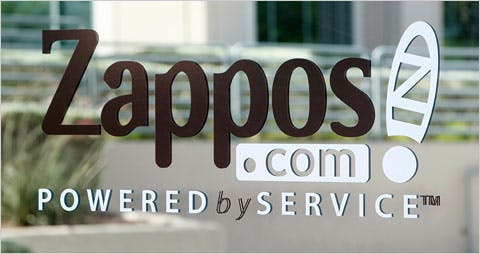I’ll believe in holacracy when CEOs start giving up their titles and submit themselves to it.
Don’t know what holacracy is? Holacracy.com says it is “a new way of running an organization that removes power from a management hierarchy and distributes it across clear roles, which can then be executed autonomously, without a micromanaging boss.”
Lord knows we can do a lot better without micromanaging bosses, and I’ve worked for a number of them, but I’m always leery of a definition like this one that seems to believe that a “micromanaging boss” is part and parcel of the management process.
Self-management is a work in progress at Zappos
I’ve also worked for a lot of bosses who didn’t micromanage, and in turn, I’ve managed a great many people who I feel confident would say that I DON’T micromanage.
But Zappos, the online shoe retailer famous for being quirky and different has finally done something quirky and different that might not be working so well, according to The Wall Street Journal.
In a story titled aptly titled, At Zappos, Banishing the Bosses Brings Confusion, the newspaper reports that when it comes to implementing holacracy:
The shake-up has been jarring even for a company famous for doing things differently. Earlier this month, Zappos said about 14 percent, or 210, of its roughly 1,500 employees had decided Holacracy wasn’t for them, and they will leave the retailer.
They were offered at least three months of severance pay by Zappos Chief Executive Tony Hsieh, who wrote in a 4,700-word memo in late March that the company hadn’t “made fast enough progress towards self-management.” Buyouts are part of an accelerating effort to “rip the band aid,” he wrote.
Employees say the new system has been confusing and time-consuming, especially at first, sometimes requiring five extra hours of meetings a week as workers unshackled from their former bosses organize themselves into “circles” and learn the vocabulary of Holacracy.”
A concept that doesn’t work for most companies
Want a clue that holacracy is a hard concept to work with? At Zappos, they need a 30-page, 15,000 word “constitution” to explain it, and CEO Tony Hsieh had to write a 4,700 word memo to the staff to defend it.
That’s a lot of words to explain how to operate without managers, which suggests that maybe a few more managers would help get it done in a lot fewer words.
I’ve been pretty clear about this: For all their faults and foibles, good managers are essential to a well-run business. Yes there are bad managers — as there are bad players in every single field and function — but a business without managers, even at Zappos, is nothing but controlled chaos where nobody knows who can make a decision.
I had some readers take me to task the last time I wrote about this. One said I was confusing leadership with management, and although you needed leaders you could eliminate the managers. He went on to point to W.L. Gore (everyone’s poster child for holacracy) and “the thousands of companies who have been hugely successful for a very long time and are all evangelists for the idea.”
Yes, I’m sure holacracy works for a few companies, but I still maintain that it is a quirk, an aberration, and not something that most successful companies would want to dip into. My proof? How many organizations in America actually operate this way? You can’t name very many after W.L. Gore, and that should be a pretty good indication that it is more of a fad than a solid business practice that can be applied to the masses.
In most cases, someone needs to be in charge
As I’ve said before, holacracy and other similar systems sound wonderful in the same way that communism sounds wonderful if you simply remove the human element from them. The problem is, humans don’t make group decisions all that well. Someone — anyone — needs to be the final arbiter if you ever want to get something decided and keep things moving ahead.
The notion of a “bossless” office is a nice trend story, but I’m totally unconvinced that holacracy actually works except in a small number of places. As quickly as the world is changing, I somehow doubt that it is changing so fast that we can eliminate having people in charge.
This week’s Wall Street Journal story on Zappos, which does a pretty good job of balancing the good and not-so-good of holacracy, seems to make the same point.
“Research shows that the value of flat organizations is mixed,” The Journal notes, “though highly motivated workers who thrive on creativity generally are best suited for going bossless.”
Yes, “highly motivated workers who thrive on creativity” probably are great candidates for working on their own without a boss to get in the way. Let me know when a majority of American companies are made up of people like that.
